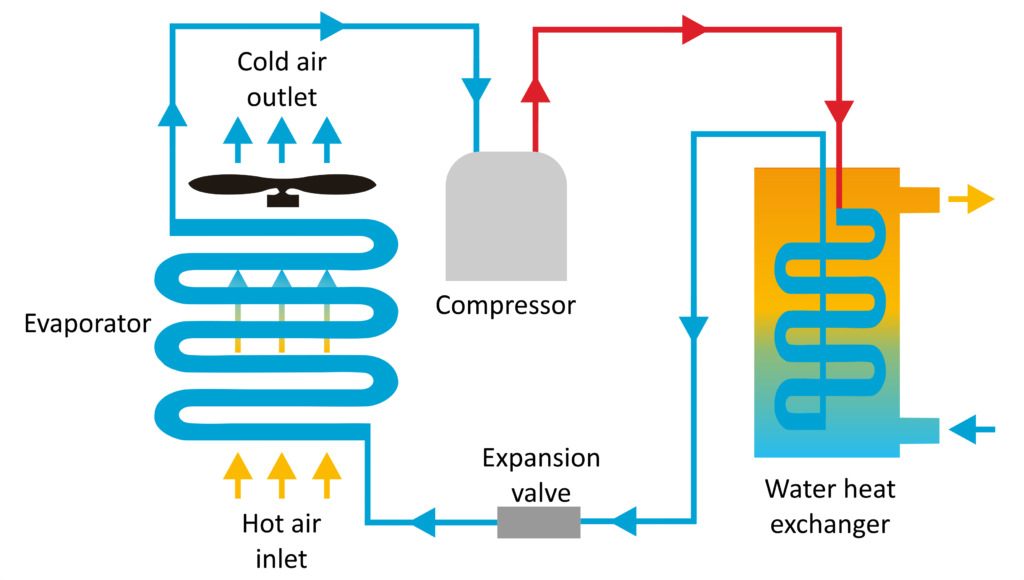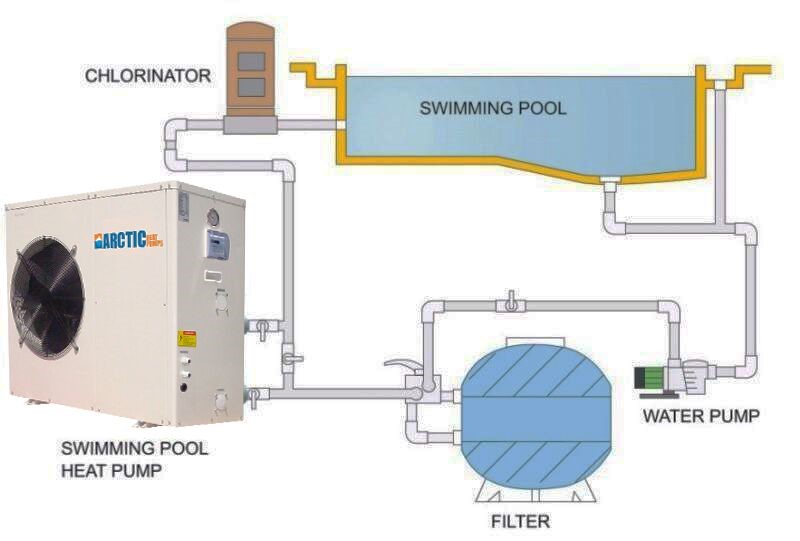Size your Pool Heat Pump
STEP 1: CALCULATE
Calculate the ideal size of Heat Pump for your pool and location.
With just a few clicks, let us help you find the perfect size heat pump to get the job done!

Imagine diving into a warm, inviting pool on a chilly autumn day. Sounds delightful, right? But heating your pool traditionally meant skyrocketing energy bills and noisy equipment. Thankfully, Arctic’s DC inverter pool heat pumps offer a modern solution, blending comfort with efficiency and quiet operation. Let’s delve into the technical aspects of this innovative technology, explained in a way that makes you feel like a poolside expert, not an engineer!
The Heart of the System: The DC Inverter
Think of the DC inverter as the maestro of the heat pump. Unlike its on/off traditional pool heat pumps, the inverter operates like a dimmer switch, constantly adjusting the power delivered to the compressor and fan. This precise control translates to several key benefits:
Energy Efficiency: By maintaining optimal operating speeds, the inverter minimizes wasted energy, leading to significantly lower electricity bills. Compared to traditional on/off pumps, DC inverter models can boast 30-50% energy savings, keeping your wallet and the environment happy.
Faster Heating: Just like a car accelerates smoothly, the inverter gradually ramps up the compressor speed, reaching your desired pool temperature quicker than on/off models. This means less waiting and more splashing!
Quieter Operation: The constant adjustments prevent the abrupt on/off cycles that cause noisy surges in traditional pumps. So, you can enjoy a peaceful poolside ambiance without the roar of the equipment.
The Rest of the Poolside Party:
Now that you understand the conductor, let’s meet the band members:
Compressor: This workhorse extracts heat from the air and transfers it to the pool water. The inverter ensures it operates at the most efficient speed for the current conditions.
Condenser Coil: This is where the pool water meet the compressed heat energy. Arctic Pool Heat Pumps use a titanium heat exchanger that is impervious to the chlorinated pool water. Here in the condenser the compressed energy from the air moves over to the cold pool water.
Evaporator Coil: This absorbs heat from the air, which is then compressed by the compressor and transferred to the pool water by the condenser.
Refrigerant: This special fluid carries the heat throughout the system, changing from a liquid to a gas and back again during the process.
The Big Picture: Putting it All Together
Imagine the sun warming the air around your pool. The DC inverter pool heat pump steps in like a magician:
The fan draws in this warm air.
The refrigerant, in its liquid state, absorbs heat from the air in the evaporator coil.
The compressor, powered by the inverter, pressurizes the refrigerant, turning it into a hot gas.
The hot gas releases its heat to the pool water through the condenser coil.
The cooled refrigerant returns to the evaporator coil, ready to repeat the cycle.
The inverter constantly monitors the temperature and adjusts the compressor speed to maintain your desired pool temperature, optimizing efficiency and minimizing noise.
Beyond the Basics:
DC vs. AC Inverters: Most pool heat pumps use AC inverters, as they are cheaper. However, the cost more to operate and the hard on/off start leads to much shorter life expectancy. DC inverters on the other hand are quiet, use upto 50% less energy and have twice the expected life.
COP (Coefficient of Performance): This metric measures the heat output per unit of energy consumed. Higher COP values indicate better efficiency, and DC inverter pumps typically have higher COPs than traditional models.
Climate Considerations: While inverter pumps work well in most climates, colder regions may benefit from additional features like defrost cycles. Arctic Heat Pumps are specially designed to operate in temperature as low as -5 F (-20 C)
Heat and Cool: Unlike most heat pumps on the market the Arctic Heat Pump has a 4-way reversing valve. This is needed to operate in cold weather and self defrost. But this reversing valve can be switched in hot weather to produce cold water and keep your pool from over heating or providing you with the heat therapy benefits of cold plunge tubs.
Heat Pumps versus Solar: Great debate! Solar pool heaters are definitely cheaper to operate and as such over a 10-year period will have the higher payback. But at a cost of less comfort. Solar pool heaters only work during the day and have their seasonal limit’s, so keeping the pool at your exact perfect temperature is more difficult than with a pool heat pump. Read more on this topic “solar versus heat pumps”
So, is a DC inverter pool heat pump right for you? If you value energy efficiency, quiet operation, and a comfortable swimming experience year-round, then the answer is a resounding yes! With its advanced technology and impressive cost savings, a DC inverter pool heat pump could be the perfect poolside upgrade for your home.
Remember, this is just a simplified overview. For more detailed technical information, consult a qualified pool professional. Now, go enjoy your warm pool with newfound knowledge of the technology working its magic beneath the surface!

Calculate the ideal size of Heat Pump for your pool and location.
With just a few clicks, let us help you find the perfect size heat pump to get the job done!
Calculate the ideal size of Heat Pump for your pool and location.
With just a few clicks, let us help you find the perfect size heat pump to get the job done!





